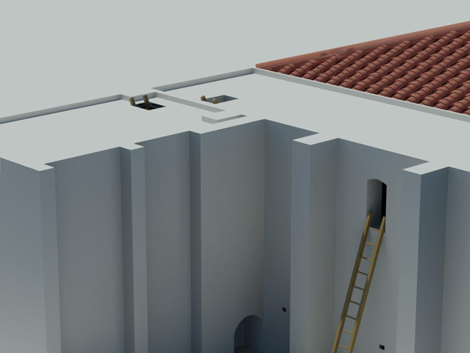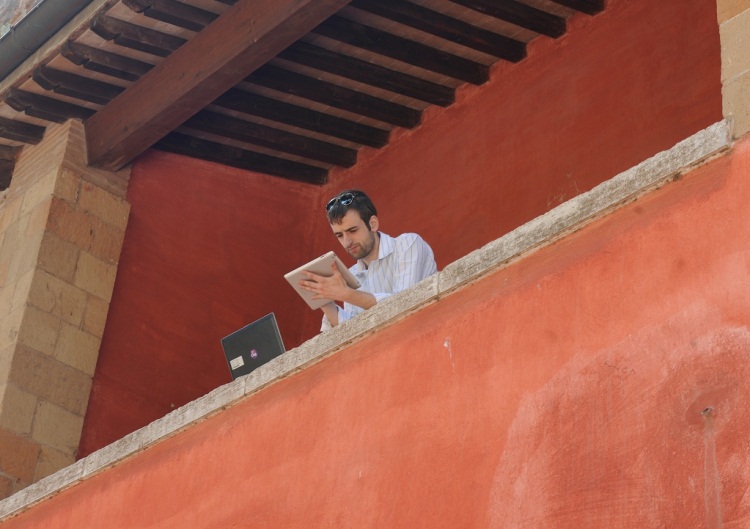Designing the Course

Hello all, my name is Peter Wheeler and I’m one of the designers on #UosFLPortus. I have the great job of helping to put the entire MOOC together. Whilst you won’t see me on camera – although I do have two cameos – I have been behind the scenes putting together each video, text and other additional content in preparation for the launch. We think it is important that you know about all the people involved in the Portus MOOC and their experiences of working at this fantastic site.
My first involvement at Portus came in 2009 when I was a first year undergraduate student at the University of Southampton. I was lucky enough to be chosen as one of the students to go to Portus as part of my field work experience. Having already been fascinated by Roman history at school, being able to come to this site and work alongside experts in the field was a truly amazing experience. Ever since those first five weeks it has been a great privilege to not only be involved in the project but also to research and contribute to it as well. It is something that I have done with great passion and commitment and has been a part of most of my academic career so far.
For my undergraduate dissertation I researched into the use of 3D models in archaeology and continued on the tradition of using computer graphics to help understand the complex buildings at Portus. I focussed on one area of the site, the Castellum Aquae, for my project and produced an interpretative visual reconstruction of the building with help from Simon and Graeme.

I then moved on to study the MSc in Archaeological Computing, again at the University of Southampton. During this time I studied the use of computational approaches and techniques in archaeology. I also learned about laser scanning, RTI, database management and additional surveying techniques.
However, the main focus of my research over the past two years has been in the use of web technologies in educating others about the site of Portus. This culminated in my recent masters dissertation, entitled “The use of Web Technologies in providing a fundamental experience of archaeological fieldwork at Portus”. This project used a series of HTML5 and WebGL technologies to create innovative educational material. Here I attempted to visualise different types of 3D data collected on site in order to give a fundamental experience of what the site looks like today and what we currently know about the archaeology. During the course of the MOOC you will get to see many of the 3D data sets that I used during my dissertation.
My role on the Archaeology of Portus MOOC began nearly a year ago with the initial designing of the course’s structure in preparation for filming on site during the 2013 field school. Through this process each video was recorded with specific learning goals in mind. This was a very enjoyable experience for me. Planning each video while walking around the excavation really highlighted how much the site has changed over the 5 years that I have visited. The amount of knowledge and understanding that I have gained in that time has been astonishing and something that I really value.

Over the past few months I have been reviewing the footage that was shot in July in order to make it even better. With the help of many volunteers we collected both archaeologists’ and non-archaeologists’ suggestions about what additional content would make each video more informative and accessible. Having created this long list we have set about finding or creating appropriate materials. I think it is really important to say that we have always tried to use content that was created by the Portus project in order to make everything we present to you as true to life as possible. I really think that the content produced – especially the videos – gives a true sense of the multi-national and the collaborative atmosphere that occurs each day on site at Portus, as well as the quality of the research work that the project achieves. I hope when the time comes that you also agree.
Once the MOOC begins you will hopefully see me online quite a bit, both on this blog and the FutureLearn forum. My main role then will be to help as many as possible enjoy the course and make it both enjoyable and worthwhile. You can find my forum comments via my FutureLearn profile.



